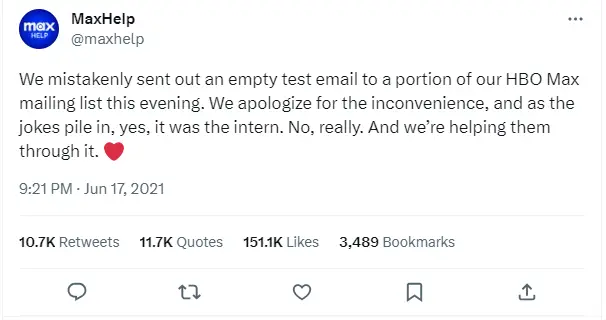
In the world of advertising and marketing, you create campaigns to produce positive outcomes. Unfortunately, this isn’t always how things work out. The severity of these backfires can range from minor to major and can significantly impact the perception of a brand or message.
To avoid these pitfalls, marketers need to really get to know their target audience and design campaigns that resonate with them. In this article, we’ll look at the factors contributing to marketing backfires and strategies to avoid them.
Understanding Backfires
A marketing backfire occurs when a campaign fails to reach its intended audience effectively or generates unintended consequences. It can happen when the marketing team works with inaccurate data or misjudges what their target audience would appreciate.
Let’s look at a real-world example of this. In 2012, Illumination Entertainment released The Lorax, an animated film based on the Dr. Suess story of the same name. The story famously depicts the negative impact of its antagonists’ business ventures vs the protagonist’s priorities. That’s why many people were unpleasantly surprised when Illumination loaned the movie’s branding to a newly aired commercial for the Mazda CX-5, a car not known for being environmentally friendly. The backlash forced Mazda to cut the campaign short.
In this case, Illumination’s marketing team missed the mark in two significant ways. First, they didn’t consider that the target audience of a movie like The Lorax probably wouldn’t be thrilled about a car with less-than-stellar environmental impact ratings. Second, the choice to partner with Mazda signals that Illumination either didn’t know about the car’s environmental impact or didn’t care—neither of which is a good look.
So what’s the secret to avoiding marketing backfires like this one? A holistic approach, collecting accurate data, understanding your target audience, and considering potential risks can make your campaigns more effective (and more positively received).
A Holistic Approach to Marketing Campaigns

Balancing Data and Creativity
Marketing teams should find effective ways to balance their creativity with the data they’ve collected on their target audience. Data and creativity are not mutually exclusive. Instead, they are two essential components of successful marketing campaigns. Data provides valuable insights into target parameters, while creative thinking fills the gaps and stimulates interest. By leveraging data alongside imaginative strategies, marketers can effectively tailor their messages and minimize the risk of backfires.
The Role of Office Culture
Your marketing team should also be free to learn from their own mistakes. In environments where mistakes are stigmatized or concealed, valuable lessons never see the light of day. Conversely, fostering an office culture that encourages open communication enables your marketing team to identify marketing backfires and develop strategies to avoid them in future efforts. Diversity within teams, both in terms of perspectives and predispositions, further enhances the ability to identify potential pitfalls.
For a fantastic example of positive culture, look no further than HBO’s 2021 incident. In June of that year, a large portion of HBO’s streaming subscribers received an empty email with the subject line “Integration Test Email #1”. This obviously caused a lot of confusion and made users wonder if the email was a phishing scam using HBO’s branding. The answer came in the form of a tweet from HBO shortly after the email was discovered:

The “blame the intern” joke quickly turned into a trend under the hashtag #DearIntern, as people around the internet chimed in to tell the intern in question that it was okay, everyone makes mistakes. Many users also shared their own slip-ups. The result was a flood of heartwarming and hilarious social media posts that both eased the pressure on HBO and provided everyone involved with a good laugh. This whole scenario demonstrates how important a positive response and determination to learn from your mistakes can be.
Keeping Marketing Backfires to a Minimum
While completely eliminating backfires may not be possible, marketers can take proactive measures to minimize their occurrence. These measures may include:
Encouraging a culture of communication within the team, enabling individuals to voice concerns and provide feedback without fear of repercussions.
Conducting after-the-fact campaign analyses to identify improvement areas and openly discuss backfires. This allows teams to refine their approach and build upon successes.
Developing hypotheses and testing them with data. This approach fosters a data-driven decision-making process.
Being willing to pivot when necessary. If an approach is not yielding the desired results, adapt and explore alternative strategies without stigmatization.
Don’t Let Marketing Backfires Hold You Back
Marketing backfires can have far-reaching consequences for brands and campaigns. Understanding the target audience, interpreting messages correctly, and fostering a supportive office culture are all crucial in mitigating the risks associated with backfires. Ultimately, the path to successful marketing lies in embracing a data-driven and creative approach and a willingness to adapt in the face of unexpected outcomes. Contact us today for more information on running successful marketing campaigns.





